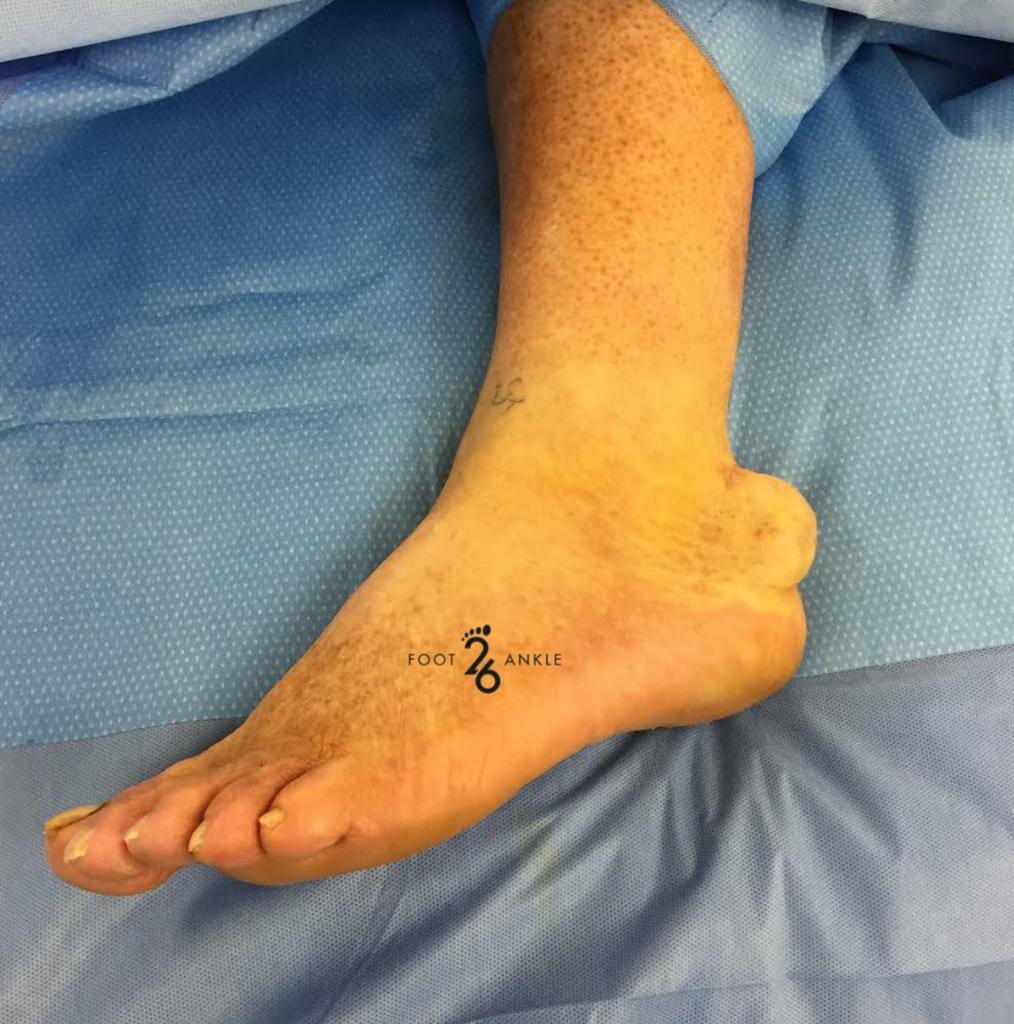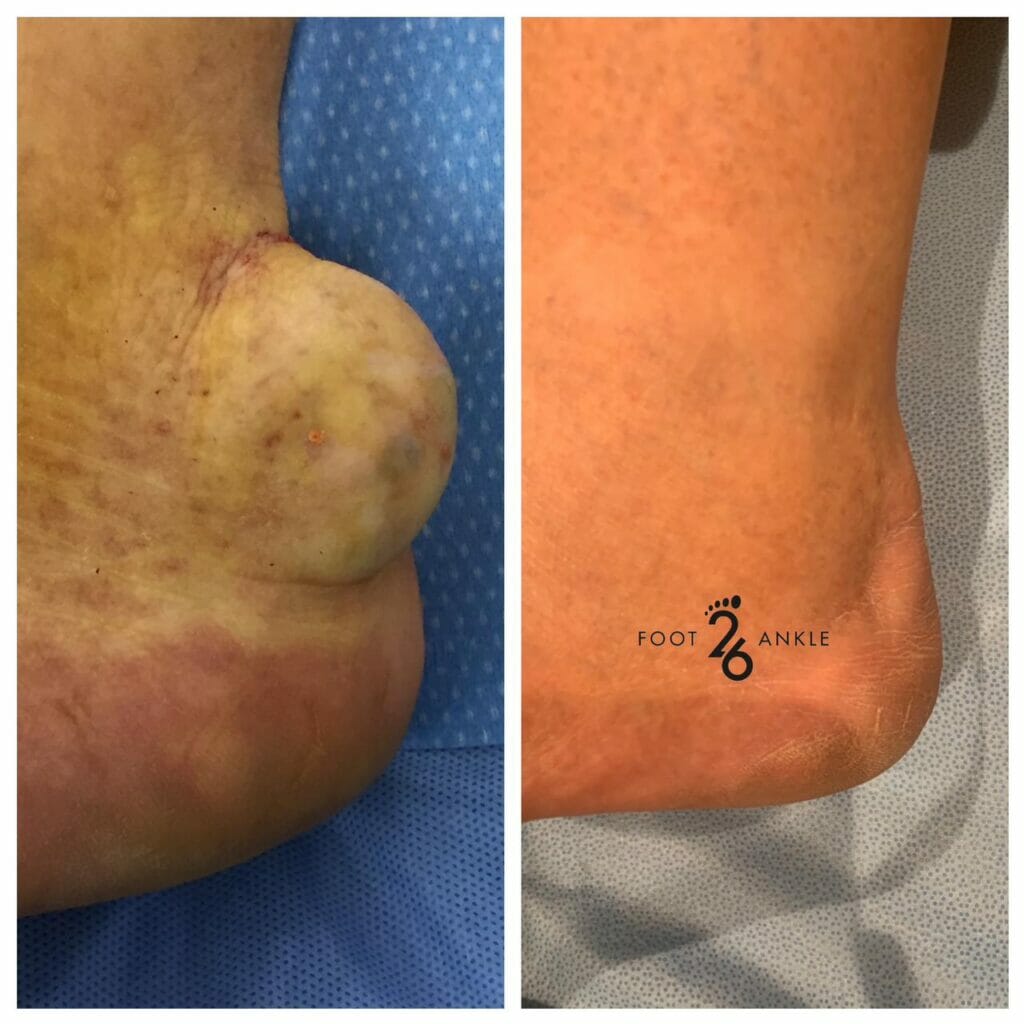The 26 Review
- What is a Ganglion Cyst A type of fluid-filled sac that develop on the foot or ankle
- Causes Trauma, repetitive stress, tendon injury, genetics
- Symptoms A noticeable lump on the top of the foot, pain and discomfort, numbness, and/or a tingling or burning sensation
- Diagnosis Physical examination, X-rays, MRIs, or Ultrasounds
- Treatment Compression and ice, draining the cyst, or surgery

Let’s take a closer look…
Ganglion cysts are a type of fluid-filled, non-cancerous sac that individuals can develop on the ankles or feet, generally seen on the top of the foot. These cysts occur when the ligaments and joints secrete fluid, due to an injury, trauma, repetitive stress, and/or irritation. When a ganglion cyst presses on a nerve, it can be painful and depending on the location of the cyst, it can restrict movement. Some cysts do not require treatment, however in certain cases, surgery is necessary. The main symptoms of a ganglion cyst include a loss of mobility, pain, numbness, and tingling sensations. If the cyst is on the foot or ankle, patients may feel discomfort or pain when walking or wearing shoes. Overtime, ganglion cysts can increase or decrease in size, either worsening or bettering symptoms.
Causes
It’s not exactly known why ganglion cysts form, however, most medical professionals can agree on a few likely reasons. Those reasons include injury or trauma to the foot or ankle, repetitive stress on the foot, and irritation to the nearby tendons or joints. Individuals between the ages of 20-40, as well as women are more likely to develop ganglion cysts, although anyone can develop this condition.
Symptoms

If you have any of the following symptoms it is highly advised to schedule an appointment with your podiatrist.
- A noticeable lump on the top of the foot or on the ankle
- A dull ache or pain near the lump
- Tingling or burning sensations
- Irritation or discomfort when wearing shoes
Diagnosis
To diagnose this condition, the medical professional will first conduct a physical exam to see if the cyst causes pain when pressed on. At times, shining a light through the cyst may indicate whether it is solid or fluid filled. Advanced imaging tests, such as X-rays, Ultrasounds, or MRIs may be ordered to help confirm the diagnosis, as well as rule out other conditions. Fluid drawn from the cyst with a needle can also confirm the diagnosis, because fluid from a ganglion cyst is normally thick and clear.
Treatment

While ganglion cysts are rarely serious, individuals should always get any unusual lump on the foot evaluated by a podiatrist to determine the best treatment plan. If the ganglion cyst is not causing pain or interfering with one’s quality of life, treatment may not be needed at all. In these cases, a podiatrist will continue to monitor the ganglion cyst and provide footwear that doesn’t irritate the cyst. When the ganglion cyst is painful or inhibits one’s mobility, there are a few procedures that can be done. The nonsurgical procedure requires draining the fluid from the cyst using steroid medication that helps to shrink the remainder of the cyst. The surgical procedure involves removing the cyst and the stalk that attaches to the joint or tendon. Surgery can injure the nearby blood vessels, nerves, and tendons so it is important to determine if surgery is right for you.